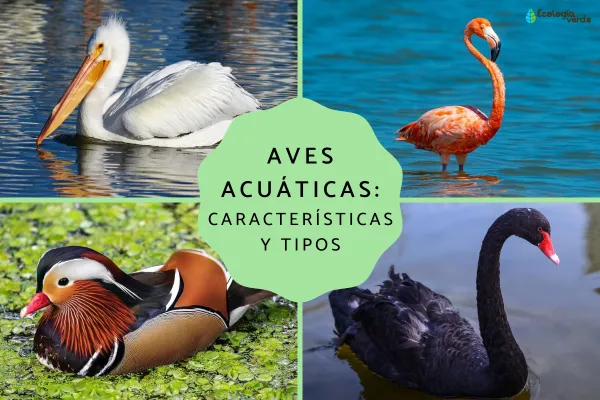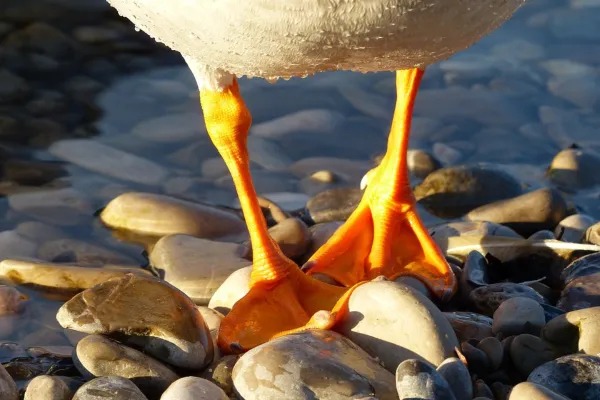As their name suggests, aquatic birds are species that have evolved to live on or around water—both freshwater and marine. Despite sharing a love of water, they display striking diversity in body shape, behavior, and ecological roles: some wade in shallows, others dive deep, some skim the surface, and many roam far out at sea.

Core characteristics of aquatic birds
Main types (by flight ability / by habitat & foraging)
Name list with scientific names
Birdwatching & conservation tips
FAQs
Aquatic habitats include:
Marine: coasts, beaches, rocky shores, offshore waters (often called “seabirds”).
Freshwater: lakes, rivers, marshes, wetlands, reservoirs, rice paddies.
Common adaptations (not all species have every trait):
Webbed or lobed toes for propulsion while swimming.
Specialized bills for spearing fish, filtering invertebrates, or probing mud (e.g., serrated lamellae in many ducks).
Waterproofing via the uropygial (preen) gland—oils spread over feathers reduce wetting and heat loss.
Salt glands (in many seabirds) to excrete excess salt after drinking seawater or eating salty prey.
Diving structures: streamlined bodies, rear-set legs, relatively denser bones; in penguins, wings evolved into flippers for powerful underwater flight.
Long legs and necks in waders, allowing movement in shallow water while keeping the body dry.
Migration & colony nesting: many species migrate seasonally and nest in dense colonies on cliffs, islands, or marshes.
Flying aquatic birds: the vast majority—gulls, terns, pelicans, ducks, geese, swans, herons, cranes, grebes, cormorants, loons/divers—use flight to connect feeding and breeding sites and to migrate.
Flightless or poor fliers: penguins are the classic example—expert swimmers that come ashore mainly to breed.

Waders/shorebirds (shallow-water foragers): long legs and often long bills; walk in shallows to pick, probe, or filter food. Examples: cranes, herons/egrets, ibises/spoonbills, flamingos. Some stir the bottom with their feet; others filter feed with specialized bills.
Swimmers & divers: pursue prey underwater; usually have webbed feet and sleek bodies. Examples: grebes (Podicipedidae), cormorants (Phalacrocoracidae), loons/divers (Gaviidae), mergansers, auks (puffins, guillemots), and penguins. Pelicans and gannets may plunge-dive from the air.
Surface feeders/floaters: ducks, geese, swans often dabble or graze; gulls/terns pick from the surface or aerially snatch prey.
Pelagic seabirds (offshore specialists): spend long periods far from land, riding winds and currents; return to land to breed. Examples: albatrosses (Diomedeidae), petrels & shearwaters (Procellariidae), storm-petrels; frigatebirds are oceanic soarers that rarely land on water.
Takeaway: “Aquatic bird” covers a wide spectrum—from ankle-deep stalkers to high-speed divers and ocean wanderers.
From your source list (plus a few helpful additions for readers):
American white pelican — Pelecanus erythrorhynchos
Common crane — Grus grus
Emperor penguin — Aptenodytes forsteri
Greater flamingo (common flamingo) — Phoenicopterus roseus
European herring gull — Larus argentatus
Mandarin duck — Aix galericulata
Black swan — Cygnus atratus
Great cormorant — Phalacrocorax carbo
Cattle egret — Bubulcus ibis
Optional extras for broader coverage:
Mallard — Anas platyrhynchos
Little egret — Egretta garzetta
Northern gannet — Morus bassanus
Common tern — Sterna hirundo
Atlantic puffin — Fratercula arctica
Common loon/Great northern diver — Gavia immer
Common kingfisher — Alcedo atthis
Eurasian coot/American coot — Fulica atra / Fulica americana


Keep your distance: avoid entering nesting areas (cliffs, islands, reedbeds) or chasing chicks; use a long lens.
Don’t feed wildlife: handouts change natural behavior and increase disease and fishing-line entanglement risks.
Control plastic & line: pack out fishing line, hooks, and trash; join beach/wetland cleanups.
Leash dogs near wetlands and beaches: disturbance can cause nest abandonment or chick mortality.
Support wetland & coastal protection: back habitat restoration and protection of migration stopovers and breeding islands.
What’s the difference between “aquatic birds” and “seabirds”?
“Aquatic birds” is broader—includes freshwater and marine species. “Seabirds” are the subset primarily dependent on the ocean for feeding and/or breeding.
Why do some aquatic birds dive while others wade?
They occupy different foraging niches. Waders are built for shallow water; grebes, cormorants, loons, auks, and penguins evolved bodies and legs for underwater pursuit.
How do aquatic birds stay dry and warm?
They preen oil from the uropygial gland onto feathers, trapping air for insulation. Some also use counter-current heat exchange to reduce heat loss in legs and bills.
How can seabirds drink seawater?
Many have salt glands near the eyes that excrete concentrated brine, allowing them to maintain water and salt balance.
animal tags: aquatic birds
We created this article in conjunction with AI technology, then made sure it was fact-checked and edited by a Animals Top editor.